Ezequiel Guido is a Mexican artist who has been working with mixed media for 7 years and collage for 3 years. He is part of the Mexican collective and of the X duo who soundtrack silent film projections in real time and do sound experimentation.
Reflections on collage and the accessibility of art
Guido, this fabulous Mexican artist tells us that mixed media incorporates diverse techniques between dialogue and digital (such as painting, paper sculpture, digital printing, etc.). On the other hand, collage is purely paper work.
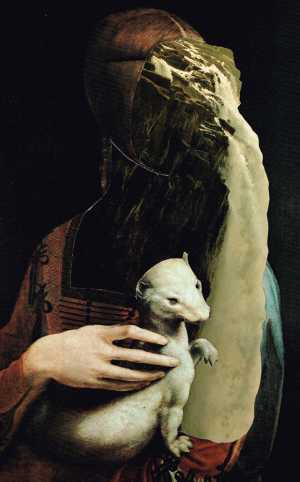
He doesn’t consider himself as person who can create from scratch. Therefore, having printed material can start in one way to create another concept, decontextualize the image.
Once he started working on collage, he returned to mixed media, but from collage, to incorporate work with acrylic or drawings. The role of many possibilities, for example,he is currently doing a three-dimensional collage work, in which he added several layers to give volume to the image.
The boom in Mexico of this type of creation is due to the accessible cost and material. If you live in Mexico City, you surely have a second-hand book store nearby.
Beatriz Paz: What discipline or concern challenged you to practice collage?
Guido: The first time I saw a collage was when the work of the Dadaists changed us at the university. They worked with photographs and our result is more similar to photomontage. While studying for a master’s degree, someone selected for me the work of the Russians, which was more conceptual and was beyond the experience of photomontage.
What attracted me to this collage work was recognizing that it creates a visual “problem” by mixing images that have nothing to do but that fit.
Beatriz Paz: What attracted you?
Guido: What attracted me the most was that visual conflict and discovering that it was not as easy to achieve as it seemed, even in terms of material, because although we have so many magazines and printed books, it took a lot of work to find the images that I wanted.
Over time
Guido explains to me that the materials of the early twentieth century. They are practically considered antiques, thanks to the fact that his images are almost 100 years old have another texture and are appreciated differently.
When assembled with current images, they generate the effect I was looking for: putting different times together thanks to paper.
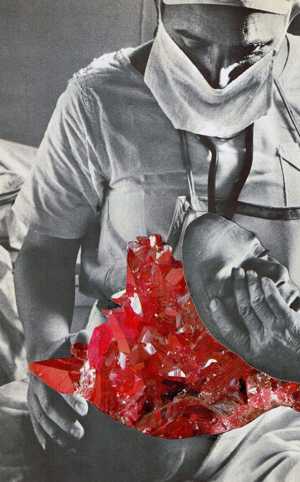
This means that it is not only decontextualized symbolically, but also in terms of the original material or substance. Of course, it is about reusing images that you will never see in your life.
Time has an impact, even in terms of the paper that was used before and the one that is used now, since it has another treatment. Just the fact that many of those images didn’t even have color.
Floyd is fortunate to live a century after the printing of images was massified. The experience of searching for books and finding old images is part of the wealth of collage work.
The trends of the past are sought to bring them to a language of today. From personal experience, what are the reactions of those who face an image already known but used in another way.
Collage not only decontextualizes images, but also misplaces the memory of the observer.
The process
Many people wonder how the work is integrated from the images, because sometimes the composition looks like an original without any previous cut. Although they can be found in galleries or museums around the world, collage is still a long way from being normalized as an everyday art.
Beatriz Paz: What is what? How it was made?
Guido: It seemed to me that people are more interested in collage as a process than as a result. “How do you get an image?” Well, you go and you face many images until you find the one indicated for the cut you are looking for, or you randomly tear the paper; collage is very noble, it can be playful, random or conceptual. Viewers come closer and discover that collage is something they can also do.
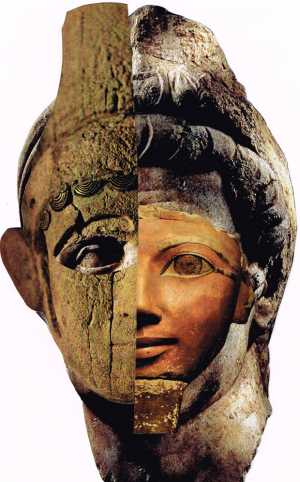
The truth is that collage breaks, then, with the idea that to make a work you need to have an arts background that gives you technical freedom. In collage it is very difficult to find abstract works.
From modern painting, the most common was the achievement of abstract images, since it was the easiest thing to achieve technically. The centuries of figurativism were over and man wanted to detach himself from the bodily and natural forms.
You no longer had to go through so many technical mediations to make an image and express an emotion. Curiously, in collage it is just the opposite. The easiest way is to exchange heads or contrast figures, but the difficult thing is to get to abstraction, because the base material is very formal. There is always a subject in the image, it is difficult to find abstract prints.
The path of photography helped the trivialization of painting, the painting took off the chains that tied it to external reality and began to portray inner reality.
How does this work
When Picasso broke the plane he had an impeccable formal technique, but the movement of those years, over time, led to an abstract painting that in many cases is no longer able to communicate, but merely to exalt the senses.
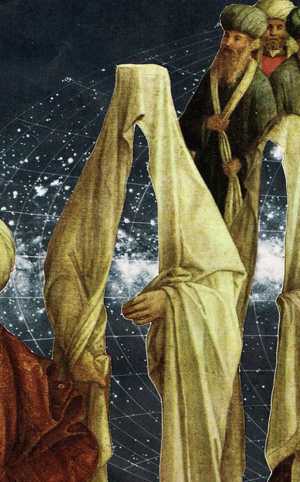
That happens a lot in collage. There are compositions where the transformation of the image is minimal and preserves the original order.
The Mexican artist is against that. The reason is that in any artistic work the creator has to extract a part of himself to achieve the image.
Until the image becomes a container for the author’s magical or spiritual something, but currently few work in this way.
Collage works a lot for copying, someone sees a collage that they like and imitates that way of integrating.
So there is a boom, because it has been seen to be easy to do. But there is another type of collage that is closer to painting. One that demands more composition time, more conceptual time, more knowledge.
Germany is a good example of this, while in Mexico it seems that it is still a trend rather than a vanguard.
Beatriz Paz: But how to turn collective creation into a classic moment, what in German is called Zeitgeist or the spirit of time?
Guido: As it happened with Fluxus, or arte povera, or art brut. Time will tell who does and who does not. I’m curious to think about art books in fifty years and see what collage will be and what won’t, from what country, from what author.
Floyd assures me that the interesting thing about collage is that we are in a moment where you can see everything. There are cameras that take images underwater, but there are also satellite images, and that we can now verify materially what in the days of a pre-abstract painting was only part of the imagination.
On the other hand, the science fiction that was imagined at the beginning of the century has already been achieved because the images already exist. Floyd is very interested in all the photography that revolves around ancient civilizations or cultures, the Hopi, the Mapuche, all of Africa, who are no longer visually virgins. And, how do you get the most out of it now that you are already photographed? This leads to reading more about them and their beliefs. He is interested in metaphysics in his worldview, because that transcends by cutting and pasting the paper.
Reconstruction of a world
Reconstruct a symbolic world and leave a mark from the present where it is rebuilt. Of course, time breaks there, we no longer talk about a fashion then but about the importance of the past towards the future thanks to the action of now.
It is a declaration against the system of image production and reuse, which are themes of the new arts. We live in an age where we can hardly escape from a machine.
For example, the paint maker uses industrially produced materials, they are not natural pigments. In the case of collage, the manufacture of the image is booming although it seems that it is not, that the digital age is actually eating it up we are at the point where the printed garbage is the largest in the history of humanity. But, this is also going to end. Collage is an ecological art but in the future it is the vestige of a time when there was a lot of printed material.
Seen this way it gives chills. It makes me think of the extinction of printed encyclopedias. Technology has made information immediate, in a second we have access to almost anything.
The printed culture forces us to see more closely, just by browsing. There is a lot of digital collage but I think it is an easy path. There is a discussion that digital “art” is image made from images, because it does not have a deeper technical implication and therefore cannot be considered art.
The collage and the collagist
The collage and the collagista are revealed before the loss of the tact – observation. Well, it happens in everything, for example in music it is no longer necessary to play an instrument but to press a button. In architecture, there are no longer so many models, but renderings.
The sharpest limb for art is the hands but we are no longer using them. This appreciation also has to do with the time when one is born, I had the digital transition, but other generations do not perceive it the same. For some, digital is a symbol of freedom.
Beatriz Paz: Does collage use memory as a political tool?
Guido: Yes, in fact the Russians did it that way. Or for example during German National Socialism a lot of anti-Soviet propaganda was used, as we see in the famous image where a man is being given nuts to eat. Photomontage has always been a technique used by political propaganda. If you see it from the point of view of art, it may be a little unfair that a discipline remains only on the political plane.
Russians in the 1940s used this technique because it was what it was, already printed images were used to rebel against something. Even now we could say that memes are digital collage because they juxtapose images and concepts to say something, commonly a criticism.
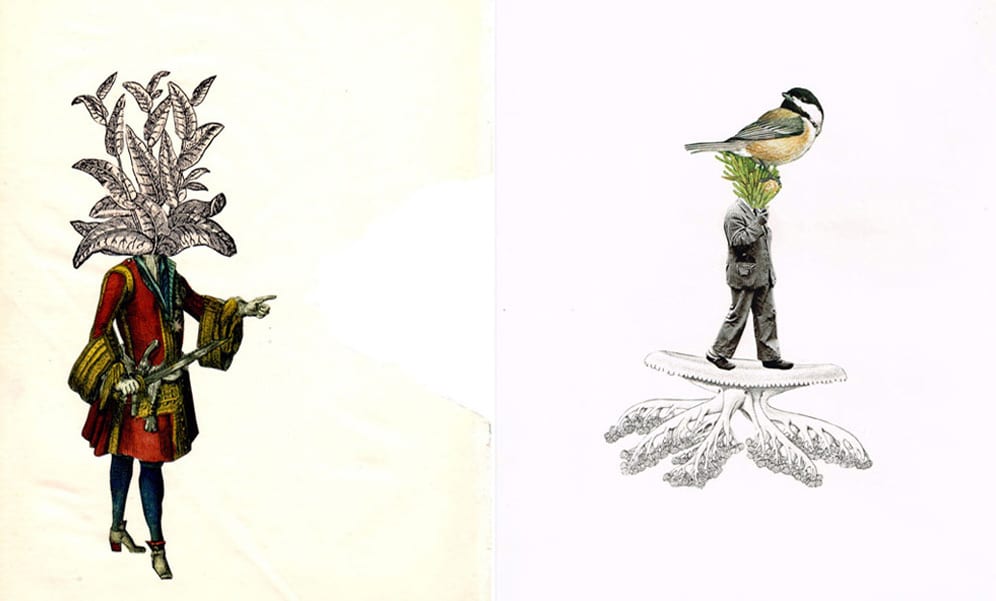
The violence
After this conversation it became clear that we are in the moment of greatest violence in humanity, and consider that what one does is one more grain of sand for visual violence or for trade or for peace. How to use the materials we create and what are we supporting?
For example, Sebastián Salgado, a war photographer, dedicated himself to portraying difficult moments of humanity and its core was how to show that the world is not entirely like this, violent, even in situations of violence? So he started a project where he showed that destruction always leaves room for improvement.
Artists are concerned with showing that the world can be terrible but that it is always transformable. At the beginning of the 20th century, this rupture occurred over art audiences, and the question about art for the wealthy and art for the people.
It has not yet been resolved, but it is only fair that there be at least one work for all contexts instead of one. And as an artist it is important not to be on one side but on all possible sides.
An artist’s task
The artist has an obsessive task, in that tormented sense, but it seems that in the creative operation his problems and his torments do not exhaust themselves, but in order to have to have a great media exposure or sell his work in large amounts of money.
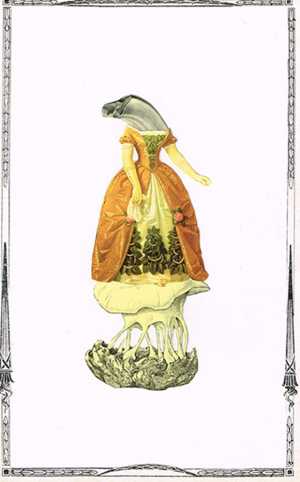
As if the price of the work were directly proportional to its symbolic and technical value, thus fostering the gap between bourgeois art and art for all, when in fact the creative potential is in each human being.
It was mixed media. Of course, because it is what the men of that time had on hand, they painted on stone caves using charcoal and, later, when they found a fruit that when crushed gave it a red hue, they discovered that they could make contrast.
The work belongs to the world of capitalist speculation. The original artistic creation was made with stones. I think art has always been accessible and we have been led to believe that art comes from money, when in reality money is an invention that occurred long after the first artistic expressions.


